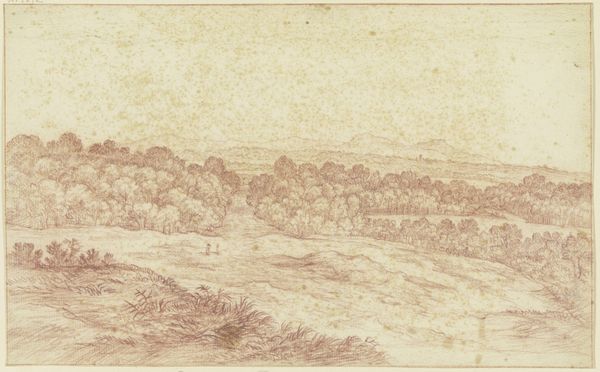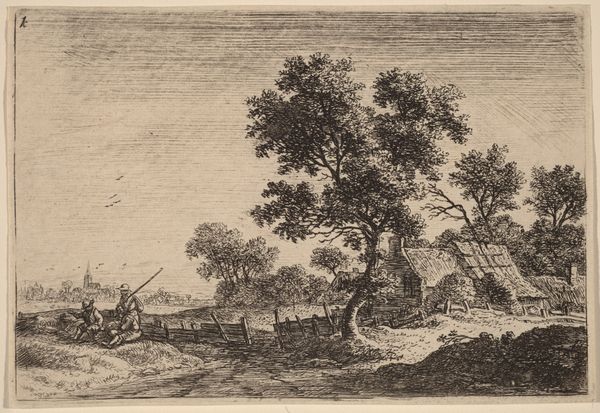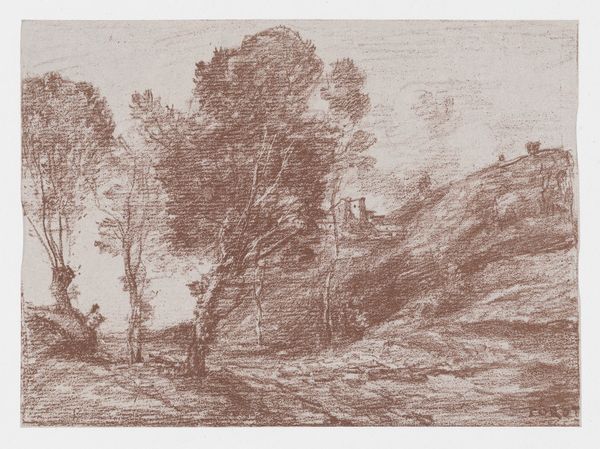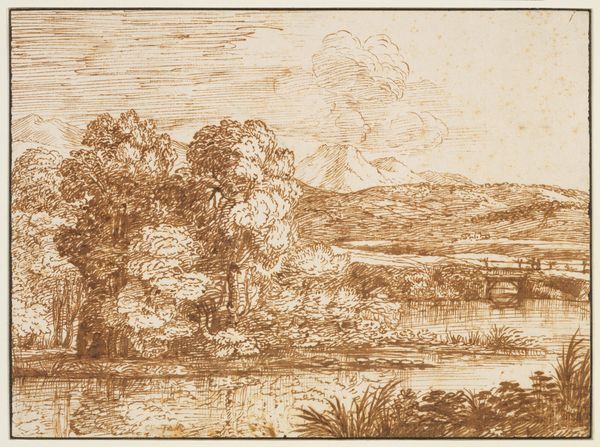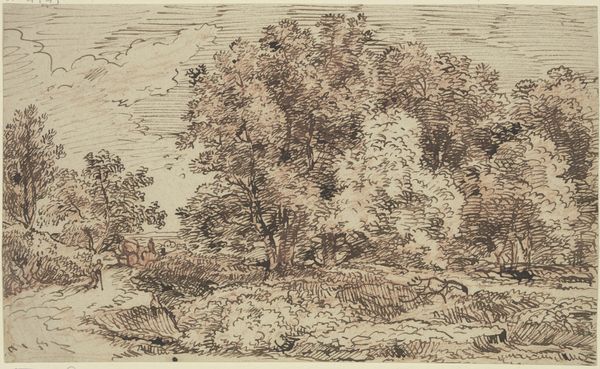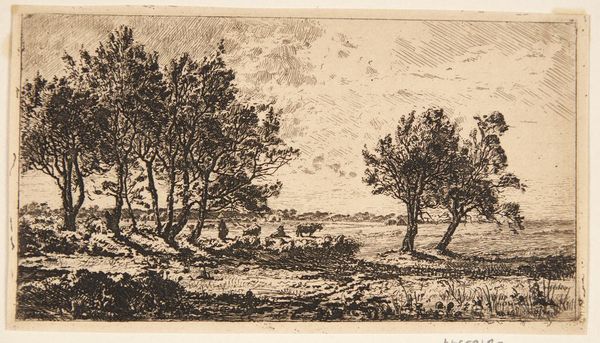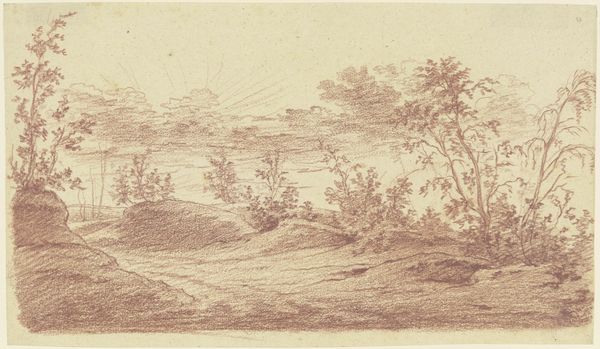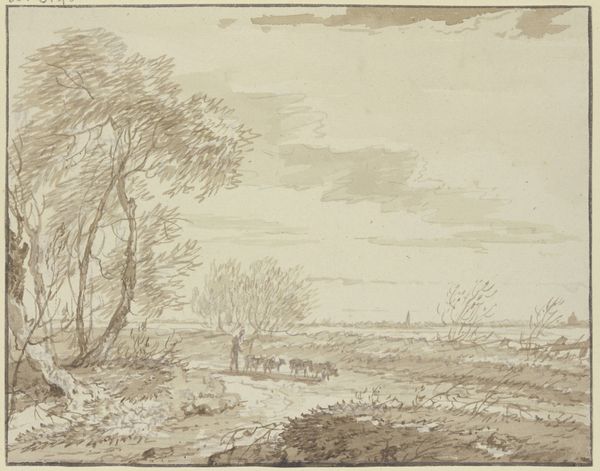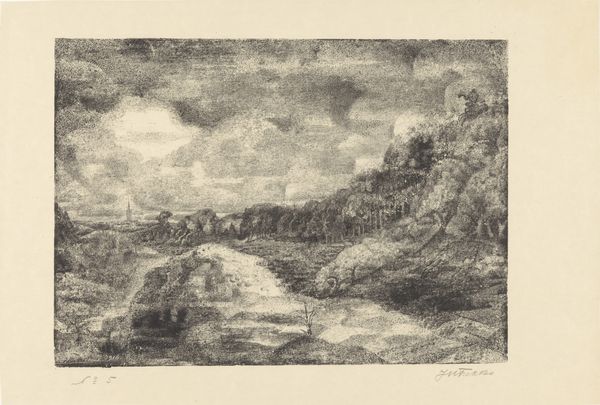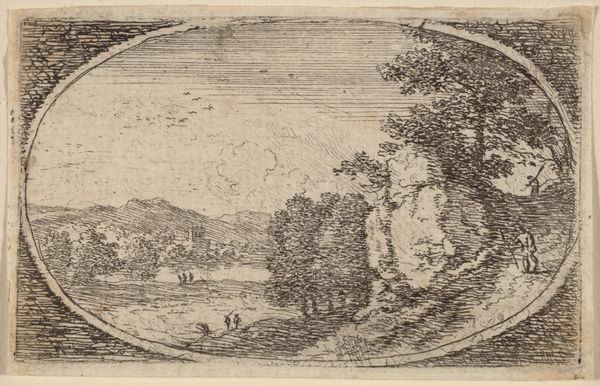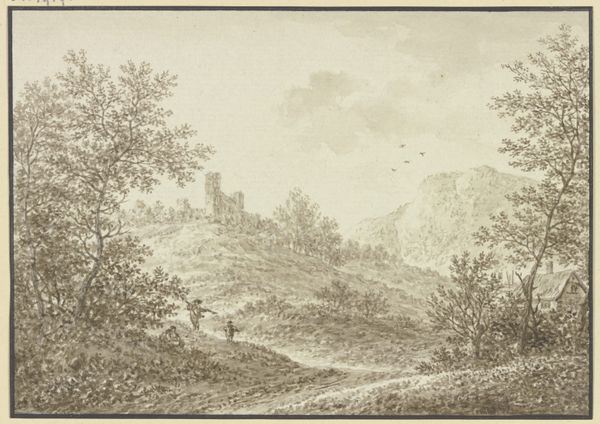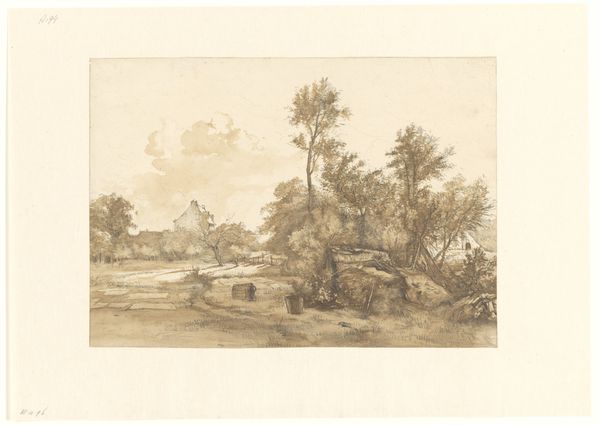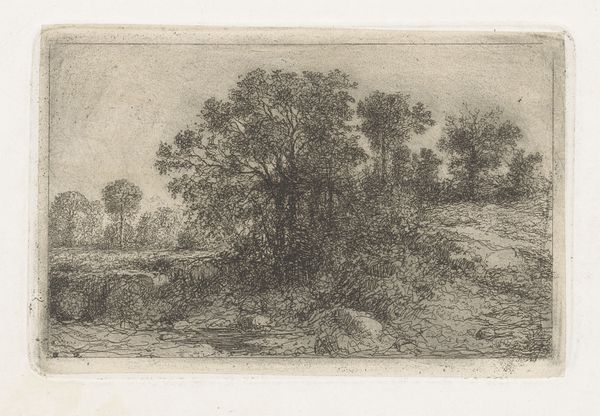
print, etching, plein-air
# print
#
etching
#
plein-air
#
landscape
#
etching
Dimensions: 7 x 8 15/16 in. (17.78 x 22.7 cm) (plate)7 15/16 x 9 7/8 in. (20.16 x 25.08 cm) (sheet)
Copyright: Public Domain
Curator: Welcome! Before us, we have Mary Nimmo Moran’s etching, "The Goosepond - East Hampton," created in 1881. It’s part of the Minneapolis Institute of Art's collection. Editor: My first thought is about its delicate atmosphere. It feels intimate, like a fleeting observation of a quiet moment by the water. Curator: Moran was quite unique. In a period when etching was experiencing a revival championed by men, she mastered it and created work outdoors – "en plein air" - that defied gendered expectations in the art world. She directly engaged in the industrial printmaking revival, making it her own! Editor: Yes, and you really see that directness in the materials, don't you? The careful layering of lines etched into the plate, the tonal shifts achieved by varied pressure... You can practically feel her hand moving, observing the landscape. The way the light bounces off the water's surface is subtly achieved but very present. You can feel that Moran mastered her tools and materials. Curator: It's remarkable how the industrial technique translates nature into such a lively scene, a sense of American rural life. Look at the architectural structure. While seemingly a minor element of the natural vista, the windmill and houses evoke industrial change. But, importantly, these innovations sit lightly on the horizon; nature still rules! Editor: Absolutely! The industrial elements are juxtaposed against organic motifs and vegetation; you can trace this even in the labor. The etching process and how Moran physically maneuvered outdoors to capture her landscape feels modern, in contrast with the timeless landscape captured here. How it engages industry in a new and meaningful relationship. Curator: An insightful connection. Nimmo Moran, who, despite her artistic capabilities, remains underrecognized next to her painter husband, also produced many views of New York, showing her engagement in modern views! This should elevate the study of her and her art. Editor: Agreed! Seeing how she harnessed etching to record and express the shifting relationships between land, labor, and society helps bring her into focus, and truly, to understand and appreciate her perspective in 1881.
Comments
No comments
Be the first to comment and join the conversation on the ultimate creative platform.
